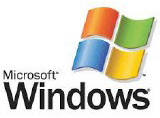A sociologist offers advice for coping with constant economic news
How are American consumers handling the daily barrage of news about tariffs, budget cuts and layoffs? Not well, according to the Wall Street Journal.
The Journal reports the evidence is in the numbers. Consumer spending is falling across all income levels, largely due to tariffs and other economic concerns. Retailers have reported weak demand since the start of the year, attributed to caution about spending.
From Walmart to McDonalds, corporate executives have painted similar pictures of the American consumer. Theyre buying less and, in the words of Costco Chief Financial Officer Gary Millerchip, being very choiceful about what they spend.
Theres nothing wrong with being careful with money and living on a budget, but Marisa Young, associate professor of sociology at McMaster University, worries that the constant economic headlines are taking a toll on consumers mental health.
Mental health concerns
"With 24/7 updates, social media algorithms that prioritize extreme content, and an endless stream of crisis-driven headlines, its no surprise that many people feel more anxious and overwhelmed than ever," Young said in a press statement.
Young highlights the concept of "ambient stress," where constant exposure to negative news creates a persistent sense of stress. "Its not just about feeling sad or frustrated in the moment it can create a sense of ongoing stress, almost like background noise that never really goes away," she said.
The relentless nature of negative news can contribute to chronic stress, leaving people feeling perpetually braced for the next crisis. This, coupled with the sense of powerlessness that arises from consuming distressing stories, can lead to anxiety, hopelessness, and emotional exhaustion.
Young also identifies "stress proliferation" as a key concern, where stress from news consumption spills over into other areas of life, affecting job security, family interactions, and sleep.
What to do
To mitigate the negative effects, she recommends:
-
Setting boundaries: Designating specific times for news consumption.
-
Diversifying sources: Balancing sensationalized headlines with contextual and solution-focused reporting.
-
Taking breaks: Stepping away from the news to reset perspective.
-
Active engagement: Shifting from passive consumption to active participation through volunteering or advocacy.
-
Social connection: Talking with others to process emotions.
-
Grounding activities: Engaging in hobbies and activities outside digital spaces.
"The goal isnt to ignore whats happening in the world, but to make sure that staying informed doesnt come at the expense of your well-being," Young said.
Sign up below for The Daily Consumer, our newsletter on the latest consumer news, including recalls, scams, lawsuits and more.
Posted: 2025-03-13 12:40:57















